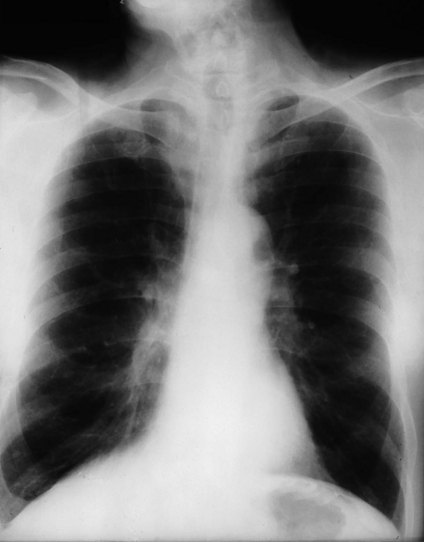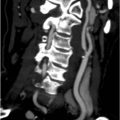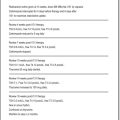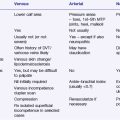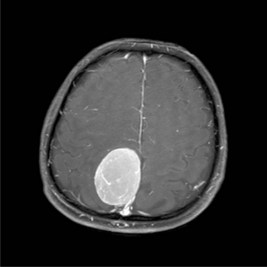Problem 53 Acute respiratory failure in a 68-year-old man
The patient’s breathing is so laboured that he is unable to answer any of your questions.
Investigation 53.1 Arterial blood gas analysis
| PaO2 | 48 mmHg |
| PaCO2 | 70 mmHg |
| pH | 7.24 |
| Bicarbonate | 29 mmol/L |
A chest X-ray is performed and is shown in Figure 53.1.
Answers
A.3 The most important immediate investigations are:
All are quick to perform, and can be done while the patient is being examined and treated.
This man is having an exacerbation of his COPD.
Revision Points
www http://www.goldcopd.org. Global strategy for the diagnosis, management and prevention of COPD, Global Initiative for Chronic Obstructive Lung Disease (GOLD) 2010
www http://www.thoracic.org/clinical/copd-guidelines/resources/copddoc.pdf. American Thoracic Society/European Respiratory Society Task Force. Standards for the diagnosis and management of patients with COPD 2004

